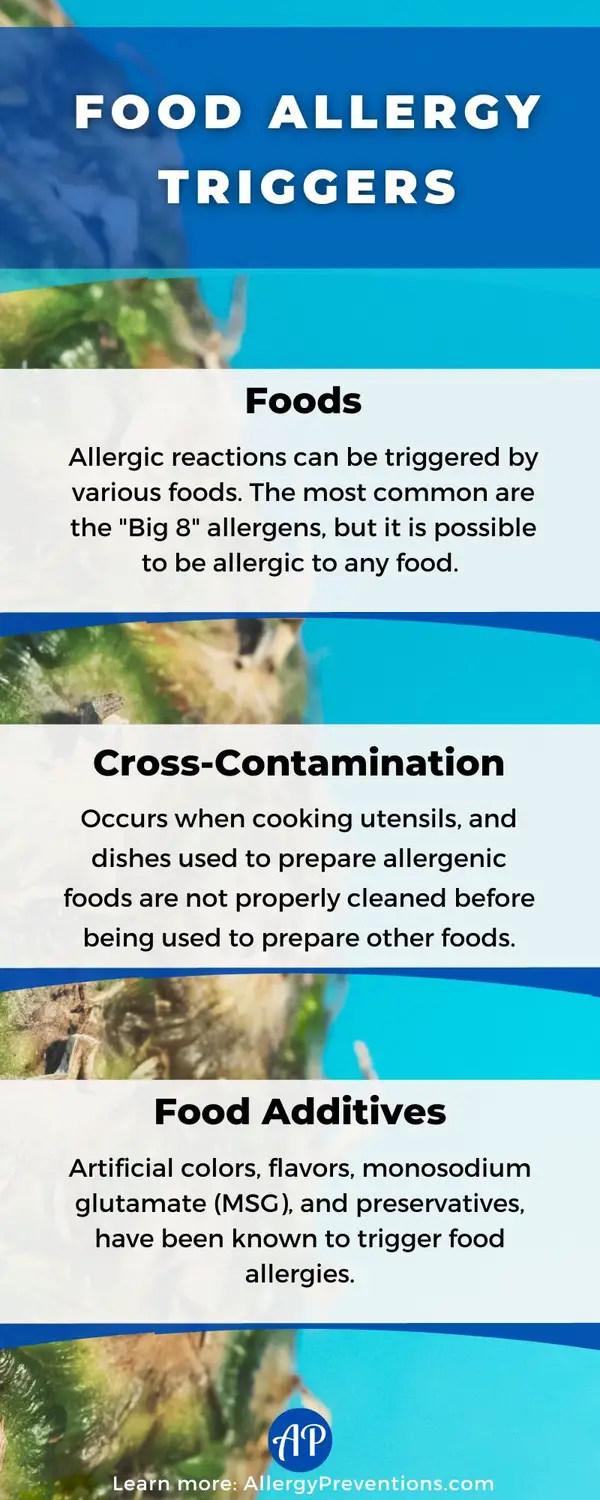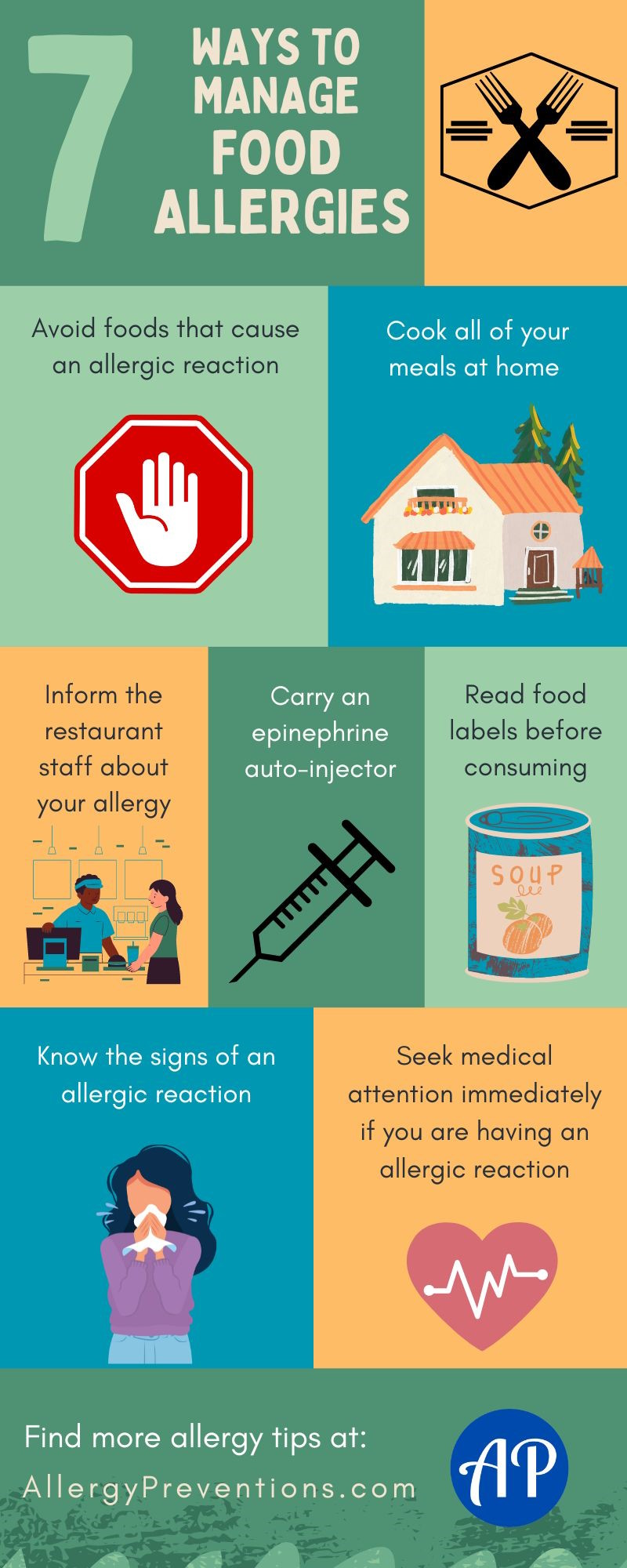Food allergies affect millions of people worldwide and can have a significant impact on their daily lives. For some, it might not be a big deal, for others, it can be life-threatening. We must understand the causes, symptoms, and other aspects of food allergies so we can manage them effectively.

Table of Contents
What are food allergies?
Food allergies occur when the body’s immune system overreacts to certain proteins found in food. The immune system mistakenly identifies these proteins as harmful and triggers an allergic reaction. The severity of the reaction can vary from person to person, ranging from mild symptoms such as itching and hives to severe symptoms such as anaphylaxis, which can be life-threatening.
The Difference Between Food Allergies and Food Intolerance

The key difference between food allergies and food intolerance is that food allergies involve an immune system response to a specific protein, while food intolerance is a non-immune response to certain components in food that the body cannot digest or metabolize properly.
Food Allergy Causes

The exact cause of food allergies is not known. Some research suggests that genetics, childhood exposures, diet, and lifestyle may play a role. More research needs to be accomplished to find the definitive causes of one’s allergies.
Genetics
Genetics and food allergies have been scientifically linked to one another. Individuals with a family history of allergies are more likely to develop food allergies themselves. This is because certain genes that regulate the immune system’s response to allergens can be inherited.
It’s also important to note that having a genetic predisposition to food allergies does not guarantee that an individual will develop them.
Environmental Factors
Environmental factors can contribute to the development of food allergies, as exposure to certain allergens in childhood has been linked to an increased food allergy risk.
The hygiene hypothesis suggests that the increased cleanliness of modern living environments may be contributing to the rise in allergies, including food allergies, by not allowing the immune system to properly “train” itself.
Other factors such as consuming a diet of highly processed foods and low amounts of fresh fruits and vegetables may increase your food allergy risk as well. Further research is needed to fully understand these links.
Food Allergy Triggers

Food allergies can be triggered by more than just food. The majority of food allergy triggers are caused by foods, cross-contamination, and food additives.
Foods
Allergic reactions can be triggered by all foods, but the “Big 8” food allergens are considered to be the most common. The Big 8 allergens include:
- Crustacean shellfish
- Eggs
- Fish
- Milk
- Peanuts
- Soybeans
- Tree nuts
- Wheat
Is your suspected food allergy not in the “Big 8”? Check out the top 20 food allergies for a more in-depth look at foods that trigger allergies.
Cross-Contamination
Cross-contamination can occur when cooking utensils, cutting boards, and dishes that have been used to prepare allergenic foods are not properly cleaned before being used to prepare other foods.
For example, if a cutting board is used to prepare shrimp and is not thoroughly washed before being used to prepare a fresh salad, the shrimp allergen may be transferred to the salad, causing an allergic reaction in someone with a shellfish allergy.
Food Additives
Certain food additives, such as artificial colors, flavors, and preservatives, have been known to cause allergic reactions in some people. Similarly, monosodium glutamate (MSG), which is used as a flavor enhancer in many processed foods, has been known to cause allergic reactions in individuals with food allergies.
Symptoms of Food Allergies

The symptoms of food allergies can range from mild to severe and can occur within a few minutes to a few hours after consuming the allergen. Some food allergy reactions include:
- Abdominal pain
- Anaphylaxis
- Diarrhea
- Difficulty breathing
- Dizziness or lightheadedness
- Hives
- Itching
- Nausea
- Rash
- Swelling of the lips, tongue, or throat
- Vomiting
- Wheezing
It is important to seek medical attention if you experience an allergic reaction, especially if the symptoms are severe or if you have a history of severe allergic reactions.
Can you keep eating foods you are allergic to?

Eating foods that you’re allergic to might be alright if your symptoms are extremely minor, but can also be life-threatening. I do not recommend it. I recommend that you avoid allergens, know your body’s reactions, and ask your doctor for advice.
I have a slight food allergy to almonds, and when I eat almonds I get some minor symptoms of an itchy mouth and runny nose. Is it smart to keep eating them? No. But, I do know if I accidentally eat them I will PROBABLY be alright, and I have an epi-pen if things change for the worse.
Diagnosing Food Allergies
If you suspect that you have a food allergy, it is essential to talk with your doctor and get a proper diagnosis. Your doctor may recommend a skin prick test (SPT), a blood test called the Radioallergosorbent test (RAST), an oral food challenge, or an elimination diet to determine the specific allergen causing the reaction.
Skin Prick Test
A skin prick test (SPT) is a common method used to diagnose food allergies. During the test, a small amount of the suspected food allergen is placed on the skin of the forearm or back. Then, the skin is pricked with a sterile needle to allow the allergen to penetrate the skin’s surface.

This image is of my forearm after the skin prick test. Needless to say, I had a few positive results.
If a person is allergic to the food, a small itchy bump or hive will develop at the site of the prick within 15-20 minutes. The size of the bump will be measured and recorded by the doctor or nurse performing the test. If no reaction occurs, it is unlikely that the person is allergic to that food.
It is important to note that SPTs should only be performed by a qualified healthcare professional in a controlled environment as there is a risk of anaphylaxis (a severe allergic reaction). In some cases, an SPT may need to be followed up with a blood test or oral food challenge to confirm or rule out a food allergy.
RAST Blood Test

The RAST (Radioallergosorbent test) blood test is a type of blood test used to detect IgE antibodies in the blood, which are produced in response to allergens. The test is used to identify food allergies by measuring the levels of these antibodies in response to specific food allergens.
During the test, a sample of blood is drawn from the patient and sent to a laboratory for analysis. The blood sample is mixed with a specific allergen and the levels of IgE antibodies are measured. The higher the level of IgE antibodies, the more likely it is that the patient is allergic to that specific allergen.
RAST tests are not always reliable and can produce false positive or false negative results. Therefore, they are often used in conjunction with other tests, such as skin prick tests and food challenges, to confirm food allergies.
Oral Food Challenge

The oral food challenge is a diagnostic test used to determine whether an individual is allergic to a particular food. It involves consuming small, gradually increasing amounts of the suspected allergen while being closely monitored for any signs of an allergic reaction.
If there are no symptoms after consuming the maximum dose, the test is considered negative, and the person is deemed not allergic to the food. However, if an allergic reaction occurs, the test is stopped immediately, and appropriate treatment is provided.
Food Elimination Diet

The elimination diet is a process of systematically removing certain foods from your diet to identify which ones may be causing food allergies or intolerances. The process involves removing specific foods for a period of time, usually several weeks, and then slowly reintroducing them to see if any allergic or intolerant reactions occur.
The elimination diet can be useful for identifying a wide range of food sensitivities, including those that may not show up on traditional allergy tests. This is because it allows you to pinpoint the exact foods that are causing your symptoms by systematically removing and reintroducing them.
Food Allergy Treatment Options

The best way to manage a food allergy is to avoid the offending food. If you do accidentally consume the food and experience symptoms, there are several treatment options available.
Dietary Changes and Food Substitutions
If you have a food allergy, you will need to make dietary changes and find suitable substitutions for the foods you are allergic to
Medications
Antihistamines can be used to treat mild to moderate allergic reactions. They work by blocking the action of histamine, a chemical released by the immune system during an allergic reaction.
Epinephrine Auto-Injector
Epinephrine is a medication used to treat severe allergic reactions (anaphylaxis). It works by quickly opening airways and reducing swelling in the throat. If you have a severe food allergy, your doctor may prescribe an epinephrine auto-injector, which you can carry with you at all times.
What about Allergy Shots?
Currently, there are no allergy shots for food allergies. Some treatment options are going through clinical trials which are Oral Immunotherapy and Epicutaneous immunotherapy for food allergies.
Alternative Treatments for Food Allergies
There are several alternative treatments for food allergies, including herbal remedies and acupuncture. However, there is limited scientific evidence to support the effectiveness of these treatments, and they should not be used in place of conventional medical treatment.
Managing Food Allergies

Managing food allergies involves avoiding the allergen and being prepared for an allergic reaction. Some of the tips to manage food allergies include:
- Avoidance
- Cook at home
- Carry an epinephrine auto-injector
- Inform restaurant staff about your allergies
- Know the signs of an allergic reaction
- Read food labels carefully
- Seeking medical attention immediately in case of an allergic reaction
Emotional Impact of Food Allergies
Living with food allergies can be challenging, and it can have a significant emotional impact on an individual. Fear, anxiety, and frustration are common emotions that individuals with food allergies experience. The fear of having a severe allergic reaction can limit an individual’s social activities and could lead to isolation.
Coping Strategies for Emotional Impact
It is essential to develop coping strategies to manage the emotional impact of food allergies. Some of the tips include:
- Developing an emergency plan with your healthcare provider
- Educating yourself about food allergies
- Finding alternative foods and recipes
- Seeking professional help if necessary
- Seeking support from family, friends, or support groups
What has been your experience with food allergies? Feel free to send me an email if you’d like to share your story.
FAQs
What is the difference between a food allergy and intolerance?
A food allergy involves the immune system, while food intolerance does not.
Can food allergies develop at any age?
Yes, food allergies can develop at any age, but they are more common in children. Children have also been known to “grow out” of food allergies as they get older.
How can I avoid an allergic reaction when eating out?
Inform the restaurant staff about your allergies, read food labels carefully, and carry an epinephrine auto-injector.
Can food allergies be cured?
There is no cure for food allergies, but they can be managed effectively with proper precautions and medical attention.
